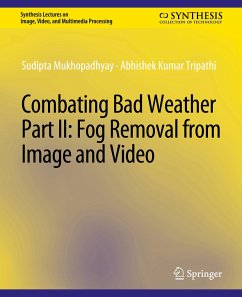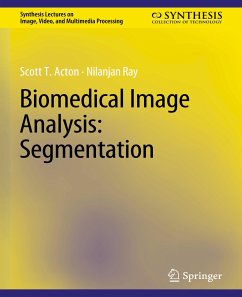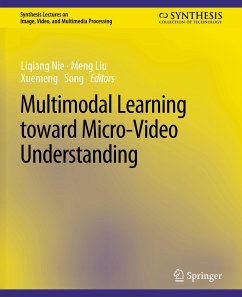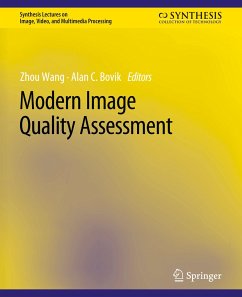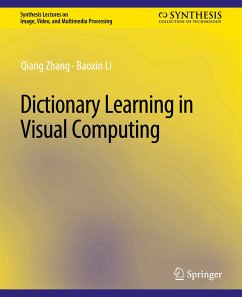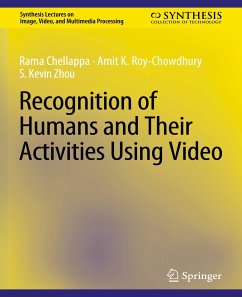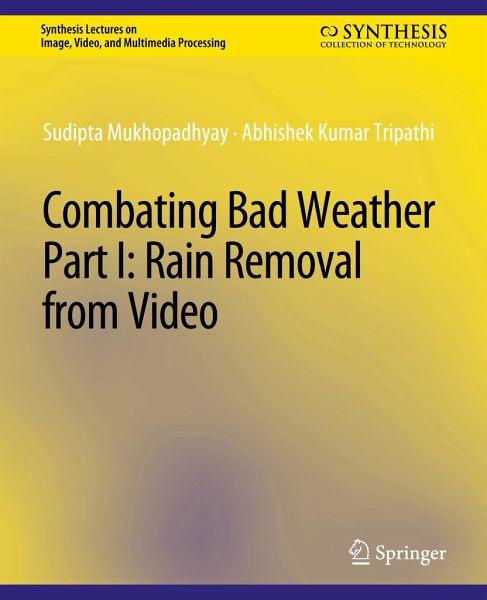
Combating Bad Weather Part I
Rain Removal from Video

PAYBACK Punkte
0 °P sammeln!
Current vision systems are designed to perform in normal weather condition. However, no one can escape from severe weather conditions. Bad weather reduces scene contrast and visibility, which results in degradation in the performance of various computer vision algorithms such as object tracking, segmentation and recognition. Thus, current vision systems must include some mechanisms that enable them to perform up to the mark in bad weather conditions such as rain and fog. Rain causes the spatial and temporal intensity variations in images or video frames. These intensity changes are due to the ...
Current vision systems are designed to perform in normal weather condition. However, no one can escape from severe weather conditions. Bad weather reduces scene contrast and visibility, which results in degradation in the performance of various computer vision algorithms such as object tracking, segmentation and recognition. Thus, current vision systems must include some mechanisms that enable them to perform up to the mark in bad weather conditions such as rain and fog. Rain causes the spatial and temporal intensity variations in images or video frames. These intensity changes are due to the random distribution and high velocities of the raindrops. Fog causes low contrast and whiteness in the image and leads to a shift in the color. This book has studied rain and fog from the perspective of vision. The book has two main goals: 1) removal of rain from videos captured by a moving and static camera, 2) removal of the fog from images and videos captured by a moving single uncalibrated camera system. The book begins with a literature survey. Pros and cons of the selected prior art algorithms are described, and a general framework for the development of an efficient rain removal algorithm is explored. Temporal and spatiotemporal properties of rain pixels are analyzed and using these properties, two rain removal algorithms for the videos captured by a static camera are developed. For the removal of rain, temporal and spatiotemporal algorithms require fewer numbers of consecutive frames which reduces buffer size and delay. These algorithms do not assume the shape, size and velocity of raindrops which make it robust to different rain conditions (i.e., heavy rain, light rain and moderate rain). In a practical situation, there is no ground truth available for rain video. Thus, no reference quality metric is very useful in measuring the efficacy of the rain removal algorithms. Temporal variance and spatiotemporal variance are presented in this book as no reference quality metrics. An efficient rain removal algorithm using meteorological properties of rain is developed. The relation among the orientation of the raindrops, wind velocity and terminal velocity is established. This relation is used in the estimation of shape-based features of the raindrop. Meteorological property-based features helped to discriminate the rain and non-rain pixels. Most of the prior art algorithms are designed for the videos captured by a static camera. The use of global motion compensation with all rain removal algorithms designed for videos captured by static camera results in better accuracy for videos captured by moving camera. Qualitative and quantitative results confirm that probabilistic temporal, spatiotemporal and meteorological algorithms outperformed other prior art algorithms in terms of the perceptual quality, buffer size, execution delay and system cost. The work presented in this book can find wide application in entertainment industries, transportation, tracking and consumer electronics. Table of Contents: Acknowledgments / Introduction / Analysis of Rain / Dataset and Performance Metrics / Important Rain Detection Algorithms / Probabilistic Approach for Detection and Removal of Rain / Impact of Camera Motion on Detection of Rain / Meteorological Approach for Detection and Removal of Rain from Videos / Conclusion and Scope of Future Work / Bibliography / Authors' Biographies



